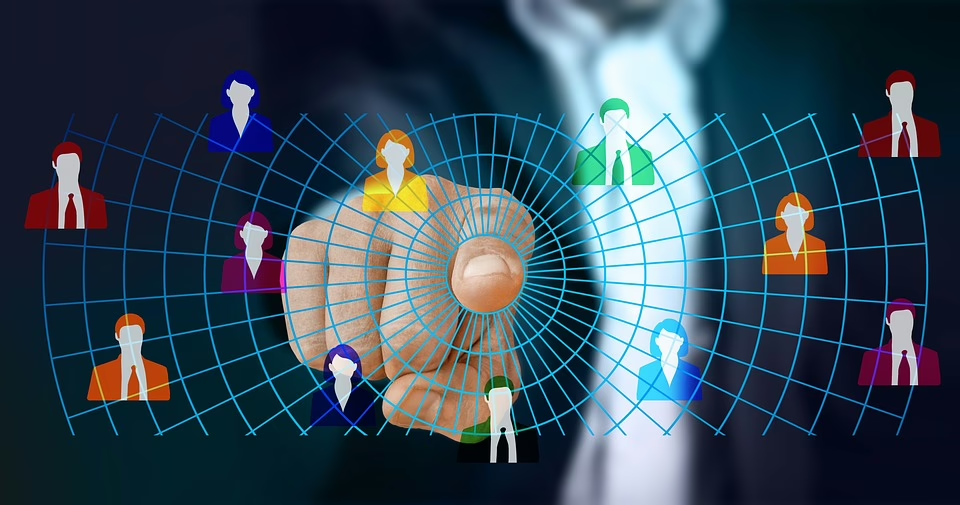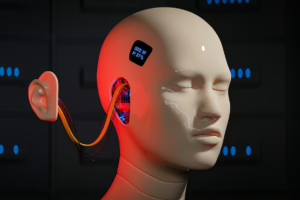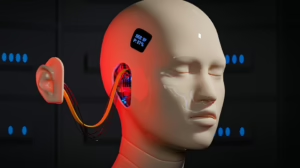AI Defined: What Every Tech Enthusiast Should Know
Artificial Intelligence (AI) is a rapidly evolving field that touches numerous aspects of modern life, reshaping industries and redefining what is possible. From simple algorithms improving customer service to advanced machine learning systems powering self-driving cars, AI is at the heart of many technological breakthroughs. This article serves as a comprehensive guide to AI, providing insights into its definition, components, applications, challenges, and future prospects.
What is AI?
At its core, Artificial Intelligence refers to the capability of a machine to imitate intelligent human behavior. The term encompasses various technologies, approaches, and applications. AI can be classified into two main categories:
-
Narrow AI (Weak AI): This type of AI is designed to perform a specific task, such as image recognition or language translation. Examples include virtual assistants like Siri or Alexa, or recommendation systems used by companies like Netflix and Amazon. These systems operate under a limited set of constraints and do not possess general intelligence.
-
General AI (Strong AI): General AI aims to have the ability to understand, learn, and apply knowledge in a way that is indistinguishable from human intelligence. This form of AI remains largely theoretical and is a topic of ongoing research and debate. The realization of General AI would represent a significant advancement in technology and raise ethical and philosophical questions about machine consciousness and rights [1].
Key Components of AI
Artificial Intelligence comprises several subfields, each with its unique methodologies and applications. Understanding these components is essential for any tech enthusiast.
1. Machine Learning (ML)
Machine Learning is a subset of AI focused on building systems that learn from data. Rather than being explicitly programmed to perform specific tasks, these systems improve their performance based on past experiences. ML can be categorized into:
-
Supervised Learning: Involves training a model on a labeled dataset, where the expected output is provided for each input. Common applications include spam detection and predictive analytics.
-
Unsupervised Learning: Deals with unlabeled data, allowing the model to identify patterns and structures independently. Applications include clustering and dimensionality reduction.
-
Reinforcement Learning: Involves training models to make decisions based on feedback from their environment. This approach is commonly used in robotics and game AI.
2. Natural Language Processing (NLP)
NLP enables machines to understand, interpret, and respond to human language. It combines linguistics and AI to facilitate interactions between humans and computers. Applications include chatbots, automated transcription services, and sentiment analysis.
3. Computer Vision
Computer Vision focuses on enabling machines to interpret and understand visual information from the world. This field utilizes deep learning techniques to analyze images and video. Practical applications are found in facial recognition, autonomous vehicles, and medical image analysis.
4. Robotics
Robotics combines AI with mechanical engineering to create machines capable of performing tasks that often involve physical movement. AI-driven robots are used in industries ranging from manufacturing to healthcare, enhancing efficiency and safety.
5. Expert Systems
These are AI systems designed to mimic the decision-making abilities of a human expert. They employ a knowledge base and a set of rules to solve complex problems in specific domains, such as medical diagnosis and financial forecasting.
The Evolution of AI
The journey of AI began in the mid-20th century, characterized by various waves of optimism and skepticism. Early research in the 1950s and 1960s focused on symbolic AI, utilizing logic and rules. However, limitations in computing power and data availability led to periods of stagnation known as “AI winters.”
The recent resurgence of AI can be attributed to advancements in computational power, the proliferation of big data, and breakthroughs in neural networks, particularly deep learning. These advancements have empowered AI systems to process vast amounts of information and improve their accuracy dramatically.
Applications of AI in Modern Society
AI is increasingly integrated into everyday life and industry, showcasing its versatility and transformative potential.
1. Healthcare
AI applications in healthcare range from diagnostics to personalized treatment plans. Machine learning algorithms analyze medical data to detect diseases, such as cancer, at earlier stages. AI-powered chatbots assist patients in scheduling appointments and answering health-related queries [2].
2. Finance
The finance sector employs AI for fraud detection, risk management, and algorithmic trading. AI systems can analyze market trends and execute trades with high speed and precision, providing significant competitive advantages [3].
3. Automotive
Self-driving cars represent one of the most ambitious applications of AI. These vehicles rely on a combination of computer vision, machine learning, and sensor data to navigate and make decisions in real-time. Companies like Tesla and Waymo are at the forefront of these developments [4].
4. Retail
AI is transforming the retail landscape through personalized shopping experiences and supply chain optimization. Recommendation algorithms analyze customer behavior to suggest products, while inventory management systems use predictive analytics to forecast demand [5].
5. Manufacturing
Automation driven by AI enhances efficiency and reduces costs in manufacturing. Robots equipped with machine learning capabilities can adapt to changes in production processes, improving overall productivity [6].
Ethical Considerations and Challenges
As AI technologies continue to advance, various ethical considerations arise. Addressing these challenges is critical to ensuring that AI benefits society without unintended consequences.
1. Bias in AI
AI systems are vulnerable to biases present in the training data they utilize. If the data reflects societal prejudices, the algorithms may inadvertently perpetuate discrimination in areas like hiring or policing. Ongoing efforts aim to develop fairer algorithms and establish guidelines for ethical AI [7].
2. Privacy Concerns
The use of AI often involves processing large amounts of personal data. Ensuring the privacy and security of this information is paramount. Regulations like GDPR in Europe mandate strict data protection measures for organizations handling personal data [8].
3. Job Displacement
The automation of tasks traditionally performed by humans raises concerns about job displacement. While AI can enhance productivity, it may render certain job roles obsolete. Reskilling the workforce and creating new job opportunities in AI and related fields will be essential to mitigate these effects [9].
4. Accountability and Transparency
As AI systems make increasingly autonomous decisions, determining accountability in cases of errors or accidents becomes challenging. Developers and organizations must foster transparency in AI decision-making processes to build trust and ensure responsible usage.
The Future of AI
The trajectory of AI development points to exciting advancements in the coming years. Key trends include:
1. Explainable AI (XAI)
As AI applications become increasingly prevalent, the demand for transparency and interpretability will grow. XAI focuses on creating AI systems whose decisions can be understood and justified by humans, fostering trust and confidence.
2. AI Ethics Frameworks
The establishment of ethical AI frameworks and guidelines will become more prevalent as organizations recognize the importance of responsible AI usage. Industry coalitions and regulatory bodies are likely to play significant roles in shaping these frameworks.
3. Collaboration between Humans and AI
The future of work will likely involve collaboration between humans and AI systems. Rather than completely replacing human labor, AI tools will assist professionals in tasks, enhancing capabilities and fostering productivity.
4. Continued Research and Development
Ongoing investment in AI research will lead to breakthroughs in various domains, from healthcare to climate change. As new algorithms and technologies emerge, the potential applications of AI will continue to expand.
Conclusion
Artificial Intelligence is no longer a distant concept found only in science fiction; it has become a crucial component of modern society. By understanding its fundamental concepts, applications, and implications, tech enthusiasts can engage meaningfully with this evolving technology. As the field advances, fostering ethical considerations, transparency, and collaboration will be integral to harnessing AI’s potential for good.
References
- Russell, S., & Norvig, P. (2020). Artificial Intelligence: A Modern Approach. Pearson.
- Esteva, A., et al. (2019). “A survey of the state of AI in healthcare”. Nature Medicine.
- He, L., & Xu, L. (2021). “Machine Learning in Finance: A Review”. Journal of Financial Data Science.
- Goodall, N. J. (2014). “Machine Ethics and Automated Vehicles”. In Proceedings of the IEEE/RSJ International Conference on Intelligent Robots and Systems.
- Gentsch, P. (2018). AI in Marketing, Sales and Customer Service. Springer.
- Bichindaritz, I. & Lombrozo, T. (2021). “Artificial Intelligence in Manufacturing”. Nordic Studies on Internetworking.
- Barocas, S., Hardt, M., & Narayanan, A. (2019). Fairness and Machine Learning: Limitations and Opportunities. arXiv preprint arXiv:1901.00001.
- European Parliament. (2016). General Data Protection Regulation (GDPR).
- Brynjolfsson, E., & McAfee, A. (2014). The Second Machine Age: Work, Progress, and Prosperity in a Time of Brilliant Technologies. W. W. Norton & Company.
This article serves as a foundational understanding of AI for tech enthusiasts, outlining its complexities, practical applications, and the significant considerations that accompany its integration into society.


























Add Comment